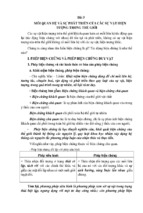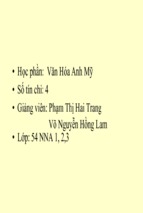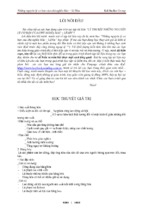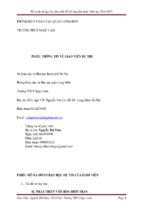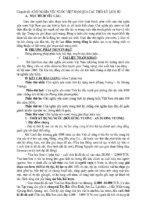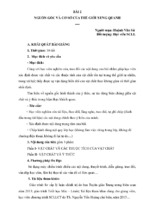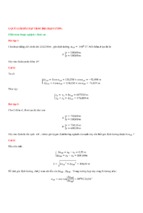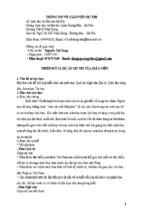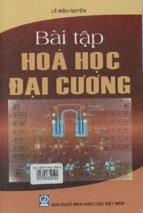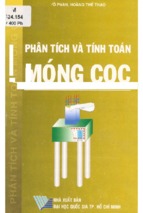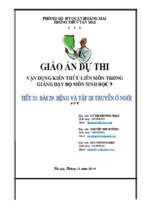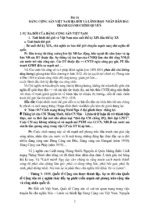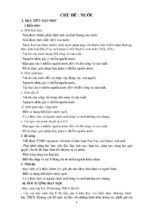scelibrary.org by RMIT UNIVERSITY LIBRARY on 01/03/19. Copyright ASCE. For personal use only
ICCREM
2017
Real Estate and
Urbanization
Edited by Yaowu Wang
Yongshi Pang
Geoffrey Q. P. Shen
Yimin Zhu, Ph.D.
Downloaded from ascelibrary.org by RMIT UNIVERSITY LIBRARY on 01/03/19. Copyright ASCE. For personal use only; all rights reserved.
ICCREM 2017
REAL ESTATE AND URBANIZATION
PROCEEDINGS OF THE INTERNATIONAL CONFERENCE ON
CONSTRUCTION AND REAL ESTATE MANAGEMENT 2017
November 10–12, 2017
Guangzhou, China
SPONSORED BY
Modernization of Management Committee
of the China Construction Industry Association
The Construction Institute
of the American Society of Civil Engineers
EDITORS
Yaowu Wang
Yongshi Pang
Geoffrey Q. P. Shen
Yimin Zhu, Ph.D.
Published by the American Society of Civil Engineers
Downloaded from ascelibrary.org by RMIT UNIVERSITY LIBRARY on 01/03/19. Copyright ASCE. For personal use only; all rights reserved.
Published by American Society of Civil Engineers
1801 Alexander Bell Drive
Reston, Virginia, 20191-4382
www.asce.org/publications | ascelibrary.org
Any statements expressed in these materials are those of the individual authors and do not
necessarily represent the views of ASCE, which takes no responsibility for any statement
made herein. No reference made in this publication to any specific method, product, process,
or service constitutes or implies an endorsement, recommendation, or warranty thereof by
ASCE. The materials are for general information only and do not represent a standard of
ASCE, nor are they intended as a reference in purchase specifications, contracts, regulations,
statutes, or any other legal document. ASCE makes no representation or warranty of any
kind, whether express or implied, concerning the accuracy, completeness, suitability, or
utility of any information, apparatus, product, or process discussed in this publication, and
assumes no liability therefor. The information contained in these materials should not be used
without first securing competent advice with respect to its suitability for any general or
specific application. Anyone utilizing such information assumes all liability arising from such
use, including but not limited to infringement of any patent or patents.
ASCE and American Society of Civil Engineers—Registered in U.S. Patent and Trademark
Office.
Photocopies and permissions. Permission to photocopy or reproduce material from ASCE
publications can be requested by sending an e-mail to
[email protected] or by locating a
title in ASCE's Civil Engineering Database (http://cedb.asce.org) or ASCE Library
(http://ascelibrary.org) and using the “Permissions” link.
Errata: Errata, if any, can be found at https://doi.org/10.1061/9780784481073
Copyright © 2017 by the American Society of Civil Engineers.
All Rights Reserved.
ISBN 978-0-7844-8107-3 (PDF)
Manufactured in the United States of America.
ICCREM 2017
iii
Preface
Downloaded from ascelibrary.org by RMIT UNIVERSITY LIBRARY on 01/03/19. Copyright ASCE. For personal use only; all rights reserved.
We would like to welcome you to the 2017 International Conference on Construction and
Real Estate Management (ICCREM 2017). Harbin Institute of Technology, Guangzhou
University, Hong Kong Polytechnic University, Louisiana State University, University of
Alberta, Luleå University of Technology, Heriot-Watt University, Marquette University,
Karlsruhe Institute of Technology. The Conference is a continuation of the ICCREM
series which have been held annually since 2003.
The theme for this conference is “Prefabricated Construction and Construction
Industrialization”. It especially highlights the importance of construction industrialization
and prefabricated technology for construction engineering and management. The
conference proceedings include 174 peer-review papers covered eleven important
subjects. And all papers went through a two-step peer review process. The proceedings of
the congress are divided into four parts:
Prefabricated Buildings, Industrialized Construction and PPP
Industry Regulation and Sustainable Development
Real Estate and Urbanization
Project Management and Construction Technology
On behalf of the Construction Institute, the American Society of Civil Engineers and the
2017 ICCREM Organizing Committee, we welcome you and wish you leave with a
wonderful experience and memory at ICCREM 2017.
Professor Yaowu Wang
Professor Yongshi Pang
Harbin Institute of Technology
Guangzhou University
P. R. of China
P. R. of China
Acknowledgments
Organized by
Harbin Institute of Technology, P.R. China
Guangzhou University, P.R. China
Hong Kong Polytechnic University, P.R. China
Louisiana State University, USA
University of Alberta, Canada
Luleå University of Technology, Sweden
Heriot-Watt University, UK
Marquette University, USA
Karlsruhe Institute of Technology, Germany
© ASCE
ICCREM 2017
iv
Executive Editors
Downloaded from ascelibrary.org by RMIT UNIVERSITY LIBRARY on 01/03/19. Copyright ASCE. For personal use only; all rights reserved.
Xianfei Yin
Xianwei Meng
Zhuyue Li
Chong Feng
Wei Gao
Yuru Gao
Tingting Chen
Jia Ding
Xiangkun Qi
Yue Cao
Zixin Han
Tongyao Feng
Hongmeng Kang
Conference website: http://www.iccrem.com/
Email:
[email protected]
Conference Committee
Committee Chairs
Prof. Yaowu Wang, Harbin Institute of Technology, P.R. China
Prof. Geoffrey Q.P. Shen, Hong Kong Polytechnic University, P.R. China
Conference Executive Chair
Prof. Jiyang Fu, Guangzhou University, P.R. China
Conference Co-Chairs
Prof. Yongshi Pang, Guangzhou University, P.R. China
Director Katerina Lachinova, Construction Institute of ASCE.(ASCE members),
USA
Prof. Yimin Zhu, Louisiana State University, USA
Prof. Mohamed Al-Hussein, University of Alberta, Canada
Prof. Thomas Olofsson, Luleå University of Technology, Sweden
Prof. Ming Sun, Heriot Watt University, UK
Prof. Yong Bai, Marquette University, USA
Prof. Kunibert Lennerts, Karlsruhe Institute of Technology, German
Organizing Committee and Secretariat
General Secretariat
Prof. Xiaolong Xue, Harbin Institute of Technology, P.R. China
Deputy General Secretariat
Prof. Xuetong Wang, Guangzhou University, P.R. China
© ASCE
ICCREM 2017
v
Committee Members
Asso. Prof. Chengshuang Sun, Harbin Institute of Technology, P.R. China
Asso. Prof Qingpeng Man, Harbin Institute of Technology, P.R. China
Downloaded from ascelibrary.org by RMIT UNIVERSITY LIBRARY on 01/03/19. Copyright ASCE. For personal use only; all rights reserved.
Mr. Zhenmin Yuan, Harbin Institute of Technology, P.R. China
Mr. Shiwei Chen, Harbin Institute of Technology, P.R. China
© ASCE
ICCREM 2017
vi
Contents
Downloaded from ascelibrary.org by RMIT UNIVERSITY LIBRARY on 01/03/19. Copyright ASCE. For personal use only; all rights reserved.
Economic Evaluation of Variable Office Buildings ................................................. 1
Rainer Schach, Anne Harzdor, and Cornell Weller
Maintenance of Large Real Estate Portfolios .......................................................... 9
Alexander Bombeck and Kunibert Lennerts
Biophilia as a Factor of Consumer Preferences in Choosing Residential
Property Product ...................................................................................................... 15
Ardelia Mandasari and Ahmad Gamal
Sharia Housing in the Real Estate Business ........................................................... 27
Nurrul Helen and Ahmad Gamal
Effects of Variation on Project Cost of Selected Building Projects in
Lagos State ................................................................................................................ 42
Oluwaseun Sunday Dosumu and Clinton O. Aigbavboa
Study on the Relationship between the Development of Commercial
Real Estate and the Total Retail Sales of Consumer Goods:
From Chongqing Case .............................................................................................. 53
Lifang Huang and Lin Wang
Influencing Factors on Beijing Real Estate Price .................................................. 62
Chunyu Wang and Jiayi Zhang
A Research on the Relationship between Sold Area, Average Sold
Price, and Total Retail Sales of Commercial Property:
A Case Study of Chongqing ..................................................................................... 68
Lin Wang and Long Yin
The Relationship between Management Incentives and Company’s
Growth: An Empirical Research on the Chinese Listed Real Estate
Companies ................................................................................................................. 75
Yuxin Liu and Yanru Gao
The Determinants of Household Housing Affordability in Chengdu, China ...... 86
Yan Liu, Yongxiang Wu, and Xiaoyuan Wang
Empirical Study on Influencing Factors of Audit Opinions Based on
China’s Real Estate Listed Companies ................................................................... 98
Xiuhua Li and Lin Qu
© ASCE
ICCREM 2017
A Research on the Influence of Real Estate Listed Companies’ Social
Responsibility on Financial Performance ............................................................. 107
Xuejun Hou and Bo Chen
Downloaded from ascelibrary.org by RMIT UNIVERSITY LIBRARY on 01/03/19. Copyright ASCE. For personal use only; all rights reserved.
The Impacts of Primary Schools and Spatial Heterogeneity on
Housing Prices: A Case Study of Shenzhen ......................................................... 116
Botong Song and Jie Zhao
Financial Efficiency of China’s Listing Real Estate Developers
Based on Malmquist Index Method ...................................................................... 125
Xu Han, Shen Zhong, and Yuqi Liu
Research on Affordable Apartment Demand Forecasting Based on the
Apartment Affordability: A Case Study of Tianjin Xiqing District .................. 132
Lipeng Wei, Xueshan Sun, and Xin Yang
Challenges and Way Forward in Chinese Real Estate Market: From a
Public Resource Management Perspective ........................................................... 140
Yu Ding and Xinyi Liu
Analysis of Commodity Housing Price Factors from the Perspective of
System Dynamics .................................................................................................... 148
Xingwu Du and Junwu Wang
An Empirical Study on Listed Real Estate Companies: The Relationship
between Cash Flow and Dividend Policy .............................................................. 157
Siyang Li and Ying Chang
The Research on Site Selection Factors of Old-Age Real Estate ........................ 166
Dan Dong, Gang Wang, Huabo Duan, and Hui Zeng
Study of System Dynamics for Health Care Housing Development in
Panzhihua ................................................................................................................ 175
Daowu Dong and Yucun Hu
Study on the Price and Economic Impact of Residential Land Based on
System Dynamics .................................................................................................... 187
Liangbao Li, Yumei Chen, and Can Yu
The Empirical Study on the Relationship between the Stock
Market and the Real Estate Market in China...................................................... 197
Ling Chen, Huijing Huang, and Wei Xu
Research on the Systematic Risk of Real Estate Listed Companies in
China: Based on Financial Perspective................................................................. 210
Peinan Ji, Guang Yu, and Xiangbin Yan
© ASCE
vii
ICCREM 2017
The Regional Real Estate Investment Environment Research Based on
Prime Component Analysis: The Case of Shandong ........................................... 217
Wei Wang, Jiaomin Yang, and Xixi Gong
Downloaded from ascelibrary.org by RMIT UNIVERSITY LIBRARY on 01/03/19. Copyright ASCE. For personal use only; all rights reserved.
Empirical Analysis of Influencing Factors of Real Estate Development:
A Case Study of Harbin ......................................................................................... 225
Qun Cao
Research on Social Responsibility of Major Infrastructure Projects
Based on Spiritual Leadership .............................................................................. 232
Xuetong Wang, Jiaxuan Zhao, Weirui Xue, and Chen Lu
Assessing the Disaster Resistance Ability of Road Infrastructure in
Village and Town Regions...................................................................................... 244
Shu Shang and Xiaolong Xue
A Research on Influence Factors of Migrant Workers Housing
Satisfaction Based on Logistic Model: Empirical Analysis from
Guangzhou............................................................................................................... 253
Wenying Zhang, Lin Chen, and Jianhui Tan
An Empirical Study on Development Evaluation of the Key Development
Zones Based on the Perspective of Major Function-Oriented Zoning .............. 262
Hui Ma and Min Li
Framework of Life-Cycle Intellectual Management Platform for
Infrastructure Projects ........................................................................................... 270
Wei Zhang and Xueping Luo
Impact of the Chinese Sponge City and Underground Utility Tunnel
Construction on the Infrastructure Development in Developing Countries ..... 288
Jian Liu and Wei Zhou
Research on Property Management and Community Governance of Old
Community in Guangzhou ..................................................................................... 298
Ping Chen and Dehao Chen
“People, Land, and Money” Collaborative Flow System of a
New Urbanization Construction: New Thinking Based on the
Supply-Side Structural Reform ............................................................................. 306
Quan Liu and Junzhi Liu
Study on the Impact of Listed Property Corporate Social
Responsibility on Its Financial Performance ....................................................... 318
JiaYing Bai and Ying Chang
© ASCE
viii
ICCREM 2017
A Study on Optimizing the Allocation of Urban Residential Land
Resources in China ................................................................................................. 328
Chao Wang and Xiao Fu
Downloaded from ascelibrary.org by RMIT UNIVERSITY LIBRARY on 01/03/19. Copyright ASCE. For personal use only; all rights reserved.
Economic Revitalization in the Developing Regions of Guangdong by
Innovating the High Speed Railway Plan and Construction Mode ................... 337
Jian Liu and Ru Liu
Research on New-Type Smart City in China Based on Smart
Construction Theory .............................................................................................. 347
Yudi Wu and Jinxiu Cai
Critical Factors for the Resilience of Complex Urban Public Spaces................ 355
Hui Xu, Bin Xue, and Yongtao Tan
The Research of Green Infrastructure Implementation
System and Stakeholders Participation Mechanism ........................................... 364
Yan Wang
Analysis on the Influencing Factors of Colleges and Universities to the
Surrounding House Price: Taking Harbin as an Example ................................. 370
Wei Gao, Lixin Sun, and Hongmeng Kang
Research on the Evaluation of Smart City Development Level Based on
“Galaxy” Model ...................................................................................................... 380
Sichen Pan, Yikun Su, and Weiyi Cong
A Model of Micro-Environmental Healthy Vulnerability in
Urban Subway Systems .......................................................................................... 392
Jiao Qi, Peng Mao, Yongtao Tan, and Liyan Jin
The Feasibility of Central Bank’s Monetary Policy Tool to Regulate the
Price of Real Estate ................................................................................................. 400
Ping Wang, Haijun Shi, Xu Hu, and Lu He
The Estimation and Regional Comparison of the Price Elasticity of
Housing Supply in China: Based on the Panel Data in 34 Cities ....................... 407
Zijing Wu and Lin Zhu
Study on the Evaluation Model and Path for Smart City ................................... 415
Fengping Xue
© ASCE
ix
ICCREM 2017
1
Economic Evaluation of Variable Office Buildings
Downloaded from ascelibrary.org by RMIT UNIVERSITY LIBRARY on 01/03/19. Copyright ASCE. For personal use only; all rights reserved.
Rainer Schach1; Anne Harzdorf2; and Cornell Weller3
1
Professor, Dept. of Civil Engineering, Institute of Construction Management, Dresden
Univ. of Technology, Dresden, Germany. E-mail:
[email protected]
2
Ph.D. Candidate, Dept. of Civil Engineering, Institute of Construction Management,
Dresden Univ. of Technology, Dresden, Germany. E-mail:
[email protected]
3
Ph.D. Candidate, Dept. of Civil Engineering, Institute of Construction Management,
Dresden Univ. of Technology, Dresden, Germany. E-mail:
[email protected]
Abstract
Generally, buildings have to be adapted to vary user requirements. In addition to
shorter utilization cycles, also the types of use vary. The relatively high vacancy rate of
office buildings in Germany and many other European countries show the necessity of
suitable concepts for several uses. The purpose is to plan and realize buildings, which can
be transformed to different use types with limited resources. Thus, the risk of potential
vacancy rates can be minimized and the value retention can be ensured.
In the present paper, variable office buildings will be analyzed and presented from
the economic point of view. The modeling and simulation of construction costs, taking into
account the risks, will be specifically discussed. These studies build the basis for the
economic evaluation of different scenarios for the conversion of office buildings. The
presented results were developed in the research project P1118 of the research association
FOSTA AIF.
INTRODUCTION
Until the end of the 20th century, the demand predominates the supply in the
German real estate market. This fact led regularly to value retention and continuous
increase of the market value of buildings. Due to dynamic market developments and
increasing user requirements, it is not possible to expect nowadays a principally lasting
value retention or value enhancement of buildings (Brauer 2013). Currently, there can be
observed a relatively high vacancy rate of office buildings in Germany and other European
countries. The average vacancy rate for major European office real estate markets was
around 10% in the second quarter of 2016 (CommerzReal 2016). To counteract this
development, it is necessary to involve concepts for variable office buildings during the
planning period.
Within the scope of the research project P1118 of the research association FOSTA
AIF, a guideline for the optimization of office buildings in consideration of steel and steel
composite construction methods will be compiled. The focus is on the conception strategy
© ASCE
ICCREM 2017
Downloaded from ascelibrary.org by RMIT UNIVERSITY LIBRARY on 01/03/19. Copyright ASCE. For personal use only; all rights reserved.
of variable buildings from the architectural, structural and economic point of view. The aim
is to reduce the risk of vacancy rates, to ensure the value retention and to realize necessary
adaptions with limited resources.
This article deals with the methodical approaches for the economic evaluation of office
buildings. In addition to the presentation of main standards, calculation methods and in
particular full financial plans will be explained in detail. Furthermore, the possibilities for the
integration of cost risks will be shown. These studies form the basis for a scenario-specific
evaluation of variable office buildings in further work steps.
BASIC INFORMATIONS FOR THE ECONOMIC EVALUATION
Overview. A comprehensive economic life cycle analysis is to be carried out with taking
into account all relevant payment flows and potential risks (Viering et al. 2015). Thus, it is
not sufficient to consider only the costs in the realization phase (Lennerts and Schneider
2011). In the following sections, the normative and methodical conditions will be
explained in detail.
Basic conditions. For the life cycle analysis of buildings, the international standard ISO
15686 (International Organization for standardization 2008) has been developed on the
basis of the national standards ASTM E917-02 (ASTM International 2002) from USA, NS
3454 (Standards Norway 2000) from Norway and AS/NZS 4536 (Standards Australia and
Standards New Zealand 1999) from Australia/New Zealand (Pelzeter 2015). The
international standard generally distinguished between life cycle costing and whole life
costing. The life cycle costing covers only the costs. This includes for example the costs
for realization, use, management, maintenance and demolition of buildings. The whole life
costing covers additionally the proceeds. This includes the proceeds from rental or sale.
Moreover, the whole life costing comprises externalities and non-construction costs
(Lützkendorf 2011). The ISO 15686 (International Organization for standardization 2008)
does not contain obligatory guidelines for the calculation method of life cycle costs (Preuß
and Schöne 2016).
Calculation methods.
The guideline GEFMA/IFMA 220-1 (German Facility
Management 2010) can be used for gaining information about suitable calculation methods.
As shown in Table 1, there are several ways to carry out a capital budgeting. Basically, it
can be differentiate between classic and modern methods. Classic methods can be
additionally divided into static and dynamic methods. All procedures of the modern
methods are based on full financial plans (Schulte et al. 2016). The core component of the
dynamic methods, which are integrated also in full financial plans, is the discounting of all
payments with the calculation of compound interests. Thus, the nominal lower value of
future payments will be considered.
Real estate investments can be represented realistically using the full financial
plans (Schulte et al. 2016). In particular, this applies to the economic evaluation of variable
office buildings.
© ASCE
2
ICCREM 2017
3
Table 1.Methods of Capital Budgeting.
Classic Methods
Static Methods
Dynamic Methods
Modern Methods
Full Financial Plans
Downloaded from ascelibrary.org by RMIT UNIVERSITY LIBRARY on 01/03/19. Copyright ASCE. For personal use only; all rights reserved.
Investigation period.
The forecast uncertainty increases exponential to the
chronological distance in relation to the starting point of view. Therefore, a suitable period
under review has to be selected. The period should be a maximum of 25 years for the
resilience of the results (Pelzeter 2015).
DEVELOPMENT OF A CALCULATION MODEL
Basic facts of full financial plans. The concept of full financial plans differs from
classic methods in that way that all investment related payments can be shown directly and
with the costs-by-cause principle (Schulte et al. 2016; Grob 2006). Full financial plans
represent in general original and derivative payments. These were gathered over a
specified period of time in a chronological sequence (Gürtler 2007). Original payments
include all payments, which are directly related to the investment. Derivative payments
include all financing and tax payments (Grob 2006). Based on these payments, important
additional information for the calculation of financial target values can be derived. Also,
the structure of full financial plans gives the possibility to add further calculations. Table 2
summarizes the several components of full financial plans.
Table 2.Parts of Full Financial Plans.
Plan
Original Payments
Derivative Payments
Additional Information
Additional Calculation
Cash Outflow, Cash Inflow
Financing Payment, Tax Payment,
Use of Cash Inflow Surpluses,
Compensation of Cash Outflow Surpluses
Balance of Financing, Credit Score,
Account Balance, Aggregated Balance
Depreciation Plan, Financial Plan,
Tax Calculation, Further Calculations
In order to assess an investment regarding the profitability, full financial plans offer
the possibility to determine different target values. This includes for example the final
assets, the amortization period as well as the return on equity and investment. An
additional advantage of full financial plans is the stochastic transformation of payment
risks. By integrating realistic intervals for the input variables, different target values can be
outputted as probability distributions in the model. On this basis, the investment risks can
be calculated and an assessment of the input variables can be made.
A more detailed description will not be given here and can be read in appropriate
literature (Grob 2006; Gürtler 2007; Schulte et al. 2016).
In the following section the costs to be determined will be described more detailed.
These are required for the original payments in terms of cash outflow.
© ASCE
ICCREM 2017
Downloaded from ascelibrary.org by RMIT UNIVERSITY LIBRARY on 01/03/19. Copyright ASCE. For personal use only; all rights reserved.
Determination of costs. In Germany, the standards DIN 276-1 (Beuth 2008a) and DIN
18960 (Beuth 2008b) are used for the calculation of construction and usage costs
(Lützkendorf 2011). The DIN 276-1 (Beuth 2008a) specifies the different levels of cost
calculation and defines the classification of costs in connection with the construction and
refurbishment as well as the conversion and deconstruction of buildings. The DIN 18960
(Beuth 2008b) identifies the different levels of usage cost calculation and defines the
classification of costs in connection with the operation of buildings (Möller and Kalusche
2013). Table 3 shows the different elements of the first classification level for the standards
DIN 276-1 (Beuth 2008a) and DIN 18960 (Beuth 2008b). Depending on the specification
level, the costs can be divided into a second and third level of detail.
Table 3.Cost Classification of Construction and Operational Costs.
Construction Costs: DIN 276-1 (Beuth 2008a) Usage Costs: DIN 18960 (Beuth 2008b)
No.
Description
No.
Description
100
Property
100
Capital Costs
200
Preparation and Development
200
Management Costs
300
Building – Construction
300
Operating Costs
400
Building – Technical Facilities
400
Maintenance Costs
500
Appurtenant Structures
600
Furnishings and Artwork
700
Additional Building Costs
For the calculation of construction and usage costs, reliable data will be needed. In
Germany, there can be used different databases. For the construction costs can be used for
example the database of ‘Baukosteninformationszentrum’ (BKI 2016) and ‘SIRADOS
Baupreishandbuch’ (SIRADOS 2017). The ‘Office Service Charge Analysis Report’
(Janssen et al. 2016) and the ‘FM.Benchmarking Report’ (Rotermund 2016) can be used to
determine the usage costs.
STOCHASTIC MODELING OF COSTS
General information. The cost analysis comprises the stochastic modelling of costs. All
risky input variables will be described with probability distributions. Thereby, cost
fluctuations can be taken into account adequately (Gürtler 2007).
Approach. First of all, the risky cost elements have to be determined. Afterwards, a
distribution function has to be assigned to each input variable. The selected function has to
be chosen in that way, that the respective probability of occurrence will be represented at its
best. The choice based on statistical evaluations or experience of specialists. To represent the
cost fluctuations, continuous distribution functions should be used. Because of the limited
investigation period of full financial plans, the costs of an income variable x has to be
defined in a finite interval [a, b] (Beichelt 1995). For the period a ≤ x ≤ b rectangular,
triangular or pert distribution (PERT = Program Evaluation and Review Technique) should
be used preferably. Figure 1 shows the mentioned probability distributions schematically.
The designation of the axes was omitted (x-axis = costs, y-axis = probability of occurrence).
© ASCE
4
ICCREM 2017
5
Downloaded from ascelibrary.org by RMIT UNIVERSITY LIBRARY on 01/03/19. Copyright ASCE. For personal use only; all rights reserved.
In the rectangular distribution, all values occur with the same probability.
Therefore, only the parameters for the minimum value (cmin) and for the maximum value
(cmax) are required. The triangular distribution has additionally a most probable value (ce)
within the defined interval of the minimum value (cmin) and maximum value (cmax). The
pert distribution can be defined with the same three parameters.
Rectangular
Distribution
cmin
cmax
Triangular
Distribution
cmin ce
cmax
Pert
Distribution
cmin
ce
cmax
Figure 1.Schematic diagrams of relevant probability distributions.
After the determination of the probability distributions of the costs in detail, a
probability distribution of the total costs have to be accumulated. In multiple simulation runs,
the randomized taking of input variables (artificial sampling) represented the selected
distribution frequency (Mun 2006). For example @Risk from Palisade or Crystal Ball from
Oracle can be used as simulation software. The selection of an appropriate simulation method
will be explained in the following section.
Preliminary study. In a preliminary study, appropriate distributions for the detailed costs
have to be selected, the simulation method has to be predefined and the number of
iterations has to be determined.
In a specific example, costs for ten different cost items were calculated and
represented by rectangular, triangular and pert distributions. Subsequently, the distribution
for the total cost of the ten different cost items was determined with the help of a stochastic
simulation with the program @Risk. The comparison of the total cost distributions shows,
that rectangular distributions generate rather high costs, triangular distributions mean costs
and pert distributions rather low costs. The influence of the selected probability
distributions on the specific results of the full financial plan has to be checked with the
help of sensitivity analyzes.
Another test criterion is the number of iterations in a simulation run. Common
methods are the Monte Carlo Simulation (MCS) and the Latin Hypercube Simulation (LHS)
(Busch 2003). In the MCS, samples are drawn from the entire probability interval in each
simulation run. In the LHS, samples are drawn from interval sections in each simulation run
(Fang et al. 2005). In comparison of both methods, the LHS requires significantly less
iterations to represent a stable distribution. Figure 2 (Kautt and Wieland 2001) shows the
described methods. The designation of the axes was omitted (x-axis = costs, y-axis =
probability of occurrence).
© ASCE
ICCREM 2017
6
Monte Carlo
Simulation
Latin Hypercube
Simulation
Downloaded from ascelibrary.org by RMIT UNIVERSITY LIBRARY on 01/03/19. Copyright ASCE. For personal use only; all rights reserved.
Random
Values
Random
Values
Figure 2.Comparison of MCS and LHS.
With the help of an iteration example, the necessary simulation runs were determined
for both methods. The simulation was carried out by using a rectangular distribution with the
lower limit value -10,000, the upper limit value +10,000 and the mean value ±0 (Matijevic
2008). In the simulation, random values are generated between the defined interval limits. With
exactly one iteration, deviations in the entire selected interval are possible. With the increasing
number of iterations, the result approaches the calculated mean value. Table 4 shows the
simulation results of the presented example for MCS and LHS depending on the number of
iterations. Already after 100 to 500 iterations an acceptable mean value arises with the LHS.
Comparable deviations with MCS can only be achieved after 100,000 simulation runs. Thus,
the LHS will be preferred for the cost analysis with the number of 1,000 iterations.
Table 4.Determination of Required Iteration Levels for MCS and LHS.
Monte-Carlo-Simulation (MCS)
Latin-Hypercube-Simulation (LHS)
Iterations
Mean Value
Deviation [%] Iterations
Mean Value
Deviation [%]
1
-3,036.843
-30.3684
1
4,797.938
47.9794
10
-1,664.270
-16.6427
10
273.810
2.7381
50
-1,428.880
-14.2888
50
13,200
0.1320
100
665.760
6.6576
100
-6.510
-0.0651
500
-278.100
-2.7810
500
0.294
0.0029
1,000
96.450
0.9645
1,000
-0.064
-0.0006
5,000
-76.130
-0.7613
5,000
0.016
0.0002
10,000
33.170
0.3317
50,000
-19.440
-0.1944
100,000
3.550
0.0355
Further worksteps. After the mentioned work steps, the stochastic costs have to be
integrated into the full financial plan and the further income parameters also have to be
determined and modeled.
SUMMARY AND OUTLOOK
In this article, the methodical approach for the economic evaluation of buildings
within the life cycle analysis has been presented. Especially, calculation methods with full
financial plans were discussed and the determination and stochastic modeling of costs were
© ASCE
ICCREM 2017
Downloaded from ascelibrary.org by RMIT UNIVERSITY LIBRARY on 01/03/19. Copyright ASCE. For personal use only; all rights reserved.
represented. Selected examples were used to choose suitable probability distributions,
simulation method and necessary iteration steps for the simulation.
The presented approach built the basis for the economic evaluation of variable
office buildings. Different alternatives can be compared and evaluated with the help of
stochastic scenario analyzes.
REFERENCES
ASTM International. (2002). ASTM E917-02: Standard practice for measuring life-cycle
costs of buildings and building systems, ASTM International, West Conshohocken.
Beichelt, F. (1995). Stochastics for engineers: an introduction to probability theory and
mathematical statistics, Teubner Verlag, Stuttgart. (in German).
Beuth. (2008a). DIN 276-1: Costs in construction: part 1: building construction, Beuth,
Berlin. (in German).
Beuth. (2008b). DIN 18960: Usage costs in building construction, Beuth, Berlin. (in
German).
Brauer, K.U. (2013). Basics of real estate management, Springer Gabler, Wiesbaden. (in
German).
Busch, T.A. (2003). Risk management in general contracting company, In-House
Publication, Zurich. (in German).
CommerzReal. (2016). The european office property market: review and outlook, In-House
Publication, Dusseldorf. (in German).
Fang, K.T., Li, F. and Sudjianto, A. (2005). Design and modeling or computer experiments,
Chapman & Hall, CRC Verlag, New York.
German Facility Management (GEFMA). (2010). GEFMA /IFMA 220-1: Life cycle cost
assessment in FM: introduction and fundamentals, In-House Publication, Bonn.
Grob, H.L. (2006). Introduction to investment: a case study history, Franz Vahlen, Munich.
(in German).
Gürtler, V. (2007). Stochastic risk analysis in PPP projects, Expert Verlag, Renningen. (in
German).
International Organization for standardization (ISO). (2008). ISO 15686-1: Buildings and
constructed assets: service-life planning: part 5: life-cycle costing, ISO, Geneva.
Janssen, U., Prokot, A. and Barthauer, M. (2016). OSCAR: Büronebenkostenanalyse,
In-House Publication, Dusseldorf.
Kautt, G. and Wieland, F. (2001). “Modeling the future: the full monte, the latin hypercube
and other curiosities.” Journal of Financial Planning, 14(12), 78-88.
Lennerts, K. and Schneider, D. (2011). Life Cycle Considerations for Sustainable Real
Estate, Perspectives Of Construction, Real Estate and Infrastructure Management.
Bauhaus University of Weimar, Weimar, 103-113. (in German).
Lützkendorf, T. (2011). Standards as a basis for understanding and instructions for
sustainable building, DIN German institute for standardization e. V.: sustainable
building: future-oriented concepts for planners and decision-makers, Beuth, Berlin.
(in German).
© ASCE
7
ICCREM 2017
Downloaded from ascelibrary.org by RMIT UNIVERSITY LIBRARY on 01/03/19. Copyright ASCE. For personal use only; all rights reserved.
Matijevic, D. (2008). Disturbed construction processes: aspects for avoiding or minimizing
a construction time extension, University publishing house of the Technical
University of Berlin, Berlin. (in German).
Möller, D.A. and Kalusche, W. (2013). Planning and construction economics: economic
theory for builders and architects, Oldenbourg Verlag, Munich. (in German).
Mun, J. (2006). Modeling risk: applying monte carlo simulation, real options analysis,
forecasting and optimization techniques, Jon Wiley & Sons, Hoboken.
Pelzeter, A. (2015) Design Variables and Whole-Life Cost Modelling, In: Robinson, H.;
Symonds, B., Gilbertson, B. and Ilozor, B.: Design Economics for the Built
Environment: Impact of Sustainability on Project Evaluation, Wiley Blackwell,
Chichester, 107-120.
Preuß, N. and Schöne, L.B. (2016). Real estate and facility management: from the
perspective of consulting practice, Springer Vieweg, Berlin and Heidelberg. (in
German).
Rotermund, U. (2016). FM.Benchmarking report: the FM value comparison, In-House
publication, Hoexter. (in German).
Schulte, K.W., Sotelo, R., Allendorf, G.J., Ropeter-Ahlers, S.E. and Lang, S. (2016). Real
estate economy, De Gruyter Oldenbourg, Berlin and Boston. (in German).
SIRADOS. (2017). Building costs handbook 2017: new construction, WEKA-Media,
Kissing. (in German).
Spielbauer, H. (2016). BKI: BKI construction costs 2016 new construction: cost alues for
positions, In-House Publication, Stuttgart. (in German).
Standards Australia and Standards New Zealand. (1999). AS/NZS 4536: Life cycle costing:
an application guide, Standards Australia and Standards New Zealand, Homebush
and Wellington.
Standards Norway. (2000). NS 3454: Life cycle costs for building and civil engineering
work: principles and classification, Standards Norway, Lysaker.
Viering, M., Rodde, N. and Zanner, C. (2015). Real estate and construction industry:
developments and trends, Springer Vieweg, Wiesbaden. (in German).
© ASCE
8
ICCREM 2017
9
Maintenance of Large Real Estate Portfolios
Downloaded from ascelibrary.org by RMIT UNIVERSITY LIBRARY on 01/03/19. Copyright ASCE. For personal use only; all rights reserved.
Alexander Bombeck1 and Kunibert Lennerts2
1
Research Associate, Institute of Technology and Management in Construction, Karlsruhe
Institute of Technology, 76131 Karlsruhe, Germany. E-mail:
[email protected]
2
Professor, Institute of Technology and Management in Construction, Karlsruhe Institute of
Technology, 76131 Karlsruhe, Germany. E-mail:
[email protected]
Abstract
Maintenance of large real estate portfolios constitutes a significant challenge for
their owners. Different corporate goals create a tension field that needs systematic
approaches to be resolved. An owner might strive for a given level of maintenance quality
to satisfy the occupiers’ needs or to uphold the value of their assets. Then again real estate
is very capital intensive, so that cash strapped owners might opt for forgoing maintenance
actions that seem not to be necessary.
To decide which of the above stated goals is to be pursued information needs to be
gathered and processed. We analyze different methods for maintenance planning and
budgeting from before advent of readily available computer systems and modern solutions
and discuss their implications. Finally, we will deduce which methods are suited for which
type of owner and will especially showcase the need for simple solutions for specific
organizations.
INTRODUCTION
Many organizations, for-profit and non-profit, own large real estate portfolios.
These are often a legacy of a long and complex past, meaning ownership structures and
managing processes are as byzantine as the portfolio itself. In such organization
maintenance backlogs often foreshadow upcoming financial strains or might even be
reason for security concerns. Every few years researchers and innovators claim to have
developed new methods for maintenance management, that make it fast, easy, reliable and
cheap to gather and process all necessary information to perform best practice maintenance
strategies.
In this paper we will discuss different approaches to systematic maintenance
budgeting as proposed by researchers. On the basis of simple thought experiments we
will show the main weaknesses of each of these approaches. The conclusion will
show, why and how these approaches work in practice and what they are useful for.
© ASCE
ICCREM 2017
MAINTENANCE OBJECTIVES
Downloaded from ascelibrary.org by RMIT UNIVERSITY LIBRARY on 01/03/19. Copyright ASCE. For personal use only; all rights reserved.
The real estate strategy of an organization reflects the organizations strategy. In
corporate real estate management, the support of the corporate strategy is even the ultimate
goal of real estate management. Therefore, the maintenance strategy may differ wildly
depending on the organization at hand.
With maintenance there are some boundaries to be drawn. Aside from special cases
as investors holding protected buildings in the hope of replacing them with more lucrative
developments, every real estate holder has an interest in conserving structural integrity and
guaranteeing safety of his assets. Not least because he is legally obliged to do so.
Following up from here the real estate strategy might dictate different financial, business
and social targets, e.g. (Hens 1999):
Minimizing cost,
Flexibility,
Embodying a marketing message,
Support of the sales process,
Efficient service,
Support of management processes,
Utilizing value potential.
From these targets the required level of maintenance can be derived. As with
corporate real estate strategies though, maintenance objectives and strategies are seldom
formulated.
MAINTENANCE BUDGETING METHODS
Bahr (2008) classifies maintenance budgeting methods into four different
categories:
Key figure oriented budgeting methods,
Value-oriented budgeting methods,
Analytic budgeting methods,
Maintenance budgeting by description of condition.
Key figure oriented budgeting methods, also called history-based budgeting, and is
defined by Bahr (2008) as the budgeting of future maintenance costs by historical
accounts. Future budgets are calculated on the basis of historic costs from maintenance. In
this calculation historical costs are mapped to a key variable such as gross square footage.
The resulting indicator is then applied to the current portfolio. The second approach is
defined as allocating a maintenance budget on the basis of the buildings value e.g., a
certain percentage of the buildings value is set aside as a maintenance budget every year.
Both methods are criticized for being imprecise and only producing indicative values.
By Bahr's (2008) definition analytic budgeting methods differ from key figure
oriented and value-oriented budgeting methods by including correction factors for
variables, which have a significant impact on maintenance cost. Those significant factors
may be, but are not limited to, building age, geometry, building services share of
construction costs.
© ASCE
10

